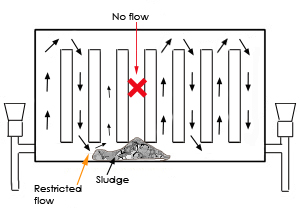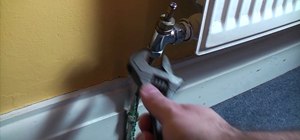How to fix common central heating problems
At this time of year, most of us rely on central heating in our homes to keep us warm. But what do you do if your radiators stop working properly?
Here’s our quick troubleshooting guide for fixing common heating problems:
Radiator valve leaking:
Switch off the central heating, and tighten the nuts on the valve with an adjustable spanner.
If this hasn’t solved the problem, you will need to replace the whole valve to stop the leak.
The Radiator is cold on top:
If your radiator is cooler at the top than the bottom, this may be due to trapped air. To solve this issue, simply bleed the radiator to release the air:
Switch the radiator on and locate the bleed valve (usually on the top corners). Use a radiator key to rotate the valve until you can hear the air escaping. When all of the air has been released, the hissing sound will stop and water will slowly drip from the valve. This water will be hot, so switch your radiator off again, and tighten the valve when it’s safe to do so.
It is advisable to bleed your radiators regularly to keep them running efficiently.

The Radiator is cold in the middle:
The likely cause is a build-up of ‘sludge’ in the radiator. The radiator will need to be flushed-out to remove the sludge. The best method is to remove the radiator from the wall and flush with clean water.
The build-up is caused by corrosion in the system; so once the sludge is removed, you may want to add some Corrosion Inhibitor to the central heating system. These are available from most DIY merchants.
All radiators are cold:
This is again due to a sludge build-up, but this time through the whole system. Blockages throughout the system are preventing the water from circulating properly.
To solve this problem, you can call a plumber to have the system professionally powerflushed, which will remove all sludge from the system. This is a job that typically costs around £300-£350.
Alternatively you can buy a sludge removing product, such as Sentinel X400, which you can add to your system to unclog the blockage – Always follow the manufacturer’s instructions for best results.
All radiators are cold on one floor:
This may be down to pump failure. Turn the central heating system off, and then try to start it up. You should be able to feel the pump working. If not, it’s probably broken and needs replacing by a professional.
If the pump is still working, then your system may not be properly balanced:
Test by turning down all of the working radiators, and see if the cold ones then warm up. If they do, you should be able to run all radiators simultaneously on a medium temperature. If you are happy with this, your system is fine to leave as it is.
If the heating works downstairs but is not upstairs, this suggests that the feed-and-expansion cistern is empty. The best advice here is to call in a professional to diagnose whether the F&E tank is refilling correctly.
These tips should be used as a guide only. If you are not confident with any of these procedures, call out an engineer to do the work professionally.


Leave a Reply